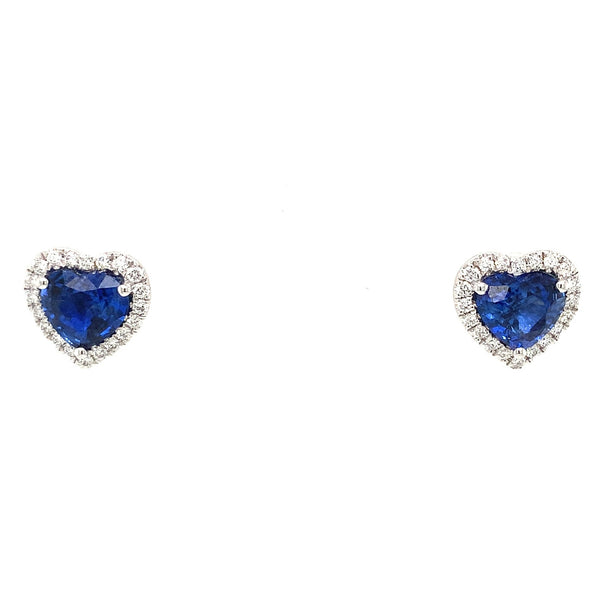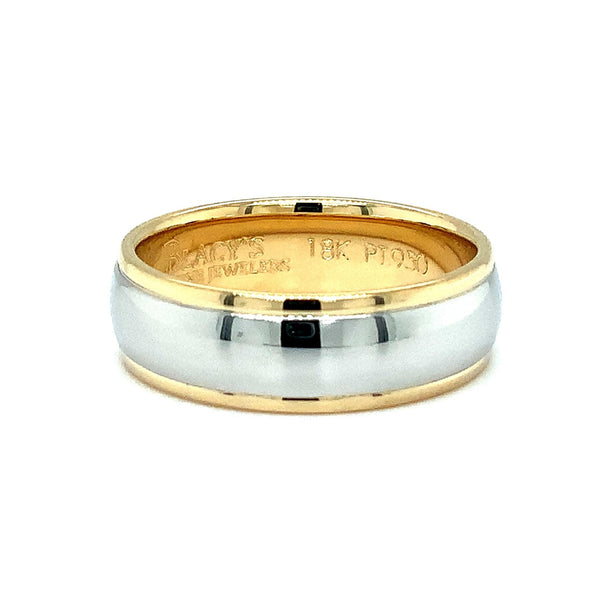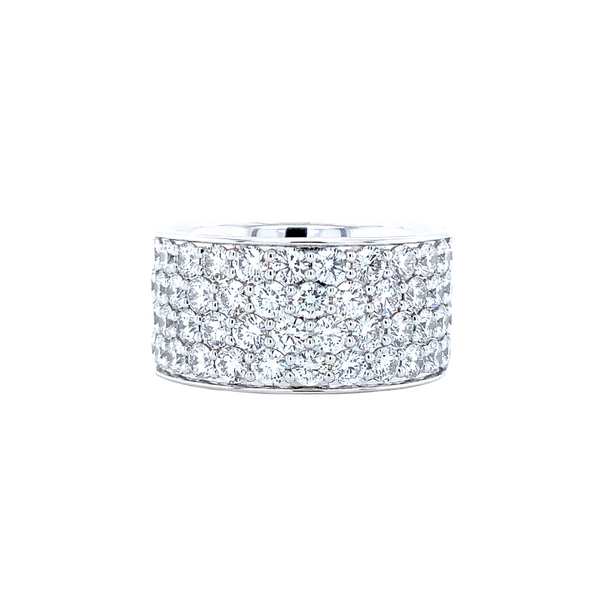Platinum
Platinum is 30 times more rare than gold. If all the platinum ever mined were melted and poured into an Olympic-sized pool, the platinum would barely reach your ankles. Gold, however, would fill three pools. Think about that when you compare platinum with other precious metals, especially if you’re in the market for an engagement ring or wedding band. Precious platinum is truly as rare as your love.
If translated into numbers, platinum—for all of its known deposits—is considerably more rare than gold and is the rarest metal of all. And it is, truly, a gift from the heavens. Found in just a few known regions of the world, including Russia and South Africa, platinum has also been discovered in heavy concentrations in meteorites- first reported in F. G. Hawley’s research papers, published in 1939. Yes, the precious metal that graces your beloved engagement ring is a celestial metal with incomparable qualities of strength, purity, and durability.
Platinum is the natural choice for milestone jewelry, such as engagement rings and wedding bands, because it holds significant gemstones better than any other precious metal. Platinum is extremely durable, so there’s a minimal chance that prongs made from platinum will dislodge your diamond. Diamonds set in platinum are also enhanced by the natural whiteness of the metal, whose glowing patina gets more beautiful with time. And unlike white gold, which retains its whiteness only by being plated with rhodium, platinum will never need re-plating.
Platinum’s purity also means that it is naturally hypoallergenic. Recognized as an element in the 18th century, scientists soon discovered that this unusual white metal, difficult to melt using traditional methods, was also nearly incorruptible by gases or chemicals making it thoroughly non-corrosive. Platinum is also extremely dense. One cubic foot of platinum weighs in at “a little more than 1,330 pounds,” according to precious metals investor I. M. Vronsky, making it 11% heavier than gold. This density has made it a favorite among those who appreciate the feel of a weightier piece of jewelry.
When compared with the gold alloys commonly used in jewelry, platinum contains a higher concentration of its elemental metal. Pure gold is known as 24K, but is much too soft and malleable to be worn in most jewelry, so it must be alloyed with other metals. White or yellow 14K gold contains only 58.5% of the actual metal and 18K contains 75%. Naturally durable yet malleable, platinum need only be mixed with the smallest amount of other platinum group metals to create an alloy that can be molded, cast and shaped into the world’s most elegant jewelry. Platinum jewelry is either 90% or 95% pure platinum.
Look inside a piece of platinum jewelry and you’ll see its purity stamp. The Federal Trade Commission demands specific marks for the content of any precious metal alloy. To protect American consumers, a high-content platinum alloy will be marked 950Pt, 950, plat or platinum, meaning that it’s at least 95% pure, elemental platinum. It’s also the only platinum alloy that can simply bear the “Platinum” stamp to identify that it’s 95% pure platinum. Other common metals that comprise the remaining 5% are iridium, ruthenium or cobalt. Another platinum alloy that’s popular in the United States contains 900 parts platinum to 100 parts other metals. The stamp for this particular alloy, per FTC guidelines, is 900Pt. In the United States, a brand’s registered hallmark must also accompany the purity stamp.
Platinum's resistance to tarnish and corrosion, as well as its silver-like shine and extreme rarity, make it ideal for making jewelry (its second largest usage).
Watchmakers such as Vacheron Constantin, Patek Philippe, and Rolex, use platinum for producing limited edition watch series.
-

Platinum Wheat Chain 16" with Lobster Clasp
CHF 1,791.00Platinum Wheat Chain 16" with Lobster Clasp
CHF 1,791.00































































